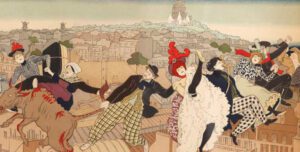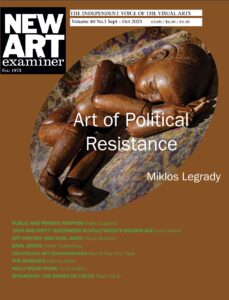
If you expected to find in Caixaforum’s futuristic premises a retrospective solo exhibition about the art of famous and iconic painter Henri de Toulouse-Lautrec, or if you long for something new, technological, exciting or bizarre you may be disappointed by these elegant, relaxing and scholarly lessons in art and life called ‘Toulouse-Lautrec and the spirit of Montmartre’.

I felt as though I had become a student attending an interactive lecture given by an invisible and silent teacher, the curator Phillip Dennis Cate. It feels as though he is explaining to me through the notices beside the drawings, lithographs, illustrations and publicity posters not only the modernist, flat linear style of the avant-garde gang of artists like Toulouse, Bonnard, Ibels, Faverot, Signac and friends but also the discourse of cultural movements like the Naturalists, Incoherents, Symbolists and Nabis. This is the essence of the mentality in a period of time at the end of the 19th century that existed in a neighbourhood of Paris peculiar for the expression of personal freedom and amusement.
These artists were critics of the establishment and what was seen as politically correct in social behaviour. There was a relaxing of habits and open war on social hypocrisy that brought down the borders between classes bringing together, without any agenda artists and prostitutes, writers and dancers, aristocracy and circus, cabaret and theatre, syphilis and cafe-concerts.
Wrapped in red velvet, smoke and the green vapor of absinthe you see and even hear the bold cancan of the Moulin Rouge and the popular Balls in the Moulin de la Galette; morally dubious performances at the cabaret ‘Chat Noirâ’; the irrational and satiric humour, ‘fumismeâ’, of the Incoherents; the unconventional and fascinating life of the circus troupes; the evolution of Naturalism in drama at the ‘Theatre Libreâu. This is the collaborative spirit found in intellectuals that preceded the fusion and cross over in contemporary art and, in general, the lights and shadows of an epoch called Bohemian that society, after more than a century still yearns for. All this is documented in the ephemeral and yet eternal imagery produced by these groups of artists mainly for the purpose of giving promotion to all those events, performances, balls, concerts and plays taking place in the neighbourhood. Art applied to everyday life. It gave a voice to a community and recognised the importance of newspapers, magazines, catalogues and printed and published material in general to broadcast and spread both ideas, works and a lifestyle.
Montmartre was an inspiration for many other artists. It was where Picasso’s ‘Senioritas D´Avignon’ was painted which changed the World of Art forever. This picture has visited Madrid and has been feted in one of the most lively, old, eclectic and charismatic neighbourhoods as if it was an old friend to reverence.
Though many cultural and highly interesting activities accompanied the show to give it a wider picture, and though extremely worth seeing, they seemed to lack the warmth that I found just outside the door strolling the surrounding area. It may be that you just cannot confine life inside the walls of an exhibition hall however hard you try.
Susana Gómez Laín

